Can Milwaukee Repeat the Menomonee Valley’s Success?
Public Policy Forum highlights seven keys to the success of the Menomonee Valley.
Almost 150 people gathered for the Public Policy Forum’s Viewpoint Luncheon on Monday at Potowatomi Casino’s Woodland Dreams Ballroom Their topic: “Replicating the Success of the Menomonee Valley.”
Joe Peterangelo, Senior Research at the Public Policy Forum, led off with a summary of the Forum’s Menomonee Valley report followed by a panel discussion led by Marquette Law fellow in Public Policy, Mike Gousha. Panelists included Laura Bray, outgoing Executive Director of Menomonee Valley Partners; Kathryn Dunn, Vice President of Community Investment for the Greater Milwaukee Foundation; Dave Misky, Assistant Executive Director for the Redevelopment Authority of the City of Milwaukee, Julia Taylor, President of the Greater Milwaukee Committee, and Wyman Winston of the Wisconsin Housing and Economic Development Authority.
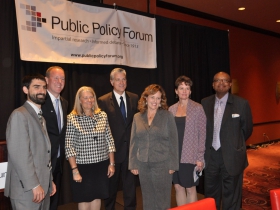
Joe Peterangelo, Public Policy Forum, David Misky, RACM, Julia Taylor, Greater Milwaukee Foundation, Mike Gousha, Marquette Law and Public Policy Fellow, Laura Bray, Menomonee Valley Partners, Kathryn Dunn, Greater Milwaukee, Foundation, Wyman Winston, WHEDA. Photo taken September 20th, 2014 by Susan Nusser
Job growth in the valley between 2002 and 2011 was 23 percent higher than that in the city as a whole, because, explains Joe Peterangelo, redevelopment of the valley added 3700 jobs. In examining the project, they found “seven objectives” that had been reached with the valley development and that they believe will be fundamental to future development in the city.
Redevelopment must be accompanied by extensive planning and design that establishes both a common vision and a detailed roadmap for how to achieve it. Planning for the valley went on for several years, say both Laura Bray, former executive director of Menomonee Valley Partners and Kathryn Dunn of the Greater Milwaukee Foundation. The valley had been underdeveloped for too long, says Bray, but it wasn’t a civic issue, just a localized one. In articulating their plan, they agreed that “We need to make no one’s neighborhood everyone’s neighborhood.”
Strong intergovernmental partnerships and public-private partnerships were also vital to the success of the project. Intergovernmental cooperation allows the city to take advantage of Tax-Incremental Financing that turned out to be the largest source of public funds used in the valley project. MVP and the city, says Peterangelo, were aggressive in their pursuit of both state and federal funding. Bray points out that federal pre-development funding allowed MVP to be involved in the very early stages of the project. That $750,000, she says, allowed their “little baby non-profit” to step up with real money and negotiate a purchase from Morton Salt, which cleared the way for Harley-Davidson to site their museum in the valley.
Though the bulk of the money for redevelopment comes from the state and the federal government, non-profits are needed to help leverage a project into a position to get that funding, and these kinds of partnerships were one of the metrics of the valley’s success. This skill will be even more important in some of the city’s other projects, like the 30th Street Corridor development, which includes a housing development component.
Not replicable in the city’s upcoming projects are the timing and the location of the Menomonee Valley project. Access to highways and downtown was appealing to developers, as were the restrictions on residential development in the valley, Peterangelo explains. It also helped that the Valley’s development was concurrent with entertainment development in the area, like Potowatomi, and the Marquette Interchange, which the valley and state capitalized on by taking the clean fill from the interchange and using it to raise building sites in the valley above flood level.
The valley can rightly call itself a success, says panel moderator Mike Gousha, but, he asks, is there anything that its stakeholders would have done differently? In his summary, Peterangelo already pointed out that the main challenge in the Valley was in linking redevelopment with job creation for local residents. This endeavor, all the panelists agree, has not entirely succeeded, but nor is it completely done either. According to David Misky, of RACM, the project’s sustainability was a goal from the beginning but: “We’ve had a little trouble connecting the workforce to the jobs. We have an opportunity to rectify that now.” Going forward in the valley and in other projects like the 30th Street Corridor, says Peterangelo: “Workforce development needs to focus on a “ladder of opportunity” that creates not only entry-level jobs that are available to local workers, but also workforce training that allows those workers to continue to develop their skills.
Perhaps the best lesson the valley has to offer is the value of a “holistic” approach—one in which stakeholders solve multiple problems simultaneously.
Ironically, all this success in the valley is going to be one of the biggest challenges for the city’s other projects. Says Kathryn Dunn of the Greater Milwaukee Foundation: “When you look at 30th Street and you look at the Inner Harbor, everyone’s going to be going back to look at the Menomonee Valley and not remembering those first five years when everything was occurring behind the curtain.”
The success of the Menomonee Valley project has taught the city a number of things: the value of early, lengthy and extensive planning; the use of financial tools like TIF financing, aggressively seeking out state and federal funding, and the value of public-private partnerships. The city knows how to take advantage of unique partnerships that pop up and has demonstrated its skill at sustainable design and environmental restoration.
Going forward, the panelists agree, are some new challenges. Dave Mirsky of RACM points out that both the Harbor and the 30th Street Corridor projects include an outdated rail line. The resolution of the housing issue in the 30th Street Corridor looms large on the horizon because one of the characteristics that made the valley attractive to developers were the restrictions there on residential use. And finally, the panelists were not convinced that they’ve figured out the workforce development component. Wyman Winston, of Transform Milwaukee, believes that the biggest challenge going forward, one that the city hasn’t quite figured out yet, is whether or not these projects can “marry both human capital and development.”
Still, much of what was learned during the redevelopment of the Menomonee Valley will be replicable in the city’s other development projects, not the least of which will be selling potential developers on those areas. “While we can’t replicate the Valley’s location,” says Joe Peterangelo, “we can point out the way that the locational strengths of the Valley were identified and projected, marketed to businesses and to the larger community.”

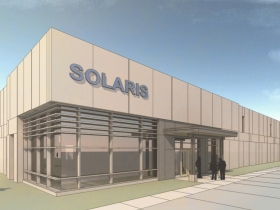

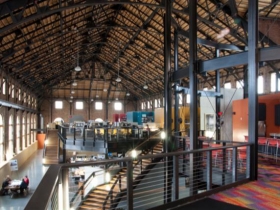
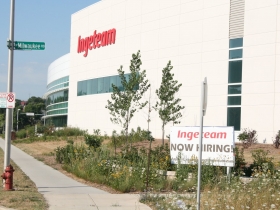
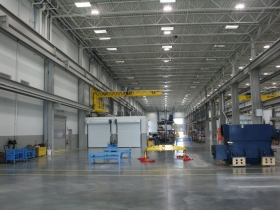
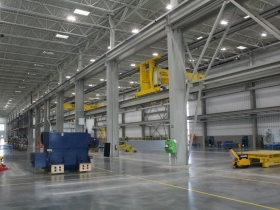
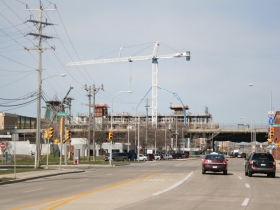




















For those think Milwaukee is Detroit, it isn’t, and they aren’t thinking.
Think of how the Talgo train factory would have helped move along development in that part of the city.